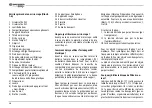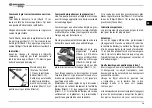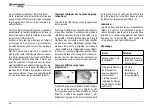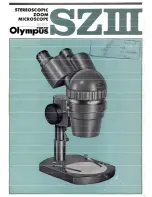
14
From there, the light is reflected back and pass
-
es through the objective and eyepiece (where
it gets magnified) into the eye. This is reflected
light microscopy.
For transparent objections (e.g. protozoa), on
the other hand, the light shines from below,
through the opening in the microscope stage
and then through the object.
The light travels further through the objective
and eyepiece, where it is also magnified, and
finally goes into the eye. This is transmitted-light
microscopy.
Many microorganisms in water, many plan
components and the smallest animal parts are
already transparent in nature. Others have to
be prepared. We may make them transparent
through a treatment or penetration with the
right materials (media), or by taking the thinnest
slices from them (using our hand or a specimen
slicer), and then examine them. You can read
more about this in the following sections.
How do I make thin specimen slices?
Only do this with the supervision of your parents
or another adult.
As I already pointed out, the thinnest slices pos-
sible are taken from an object. In order to get the
best results, we need some wax or paraffin. It is
best if you get a candle. Place the wax in a pot
and heat it carefully over a low burner. Now, dip
the object in the liquid wax a few times. Then, let
the wax get hard. Using the specimen slicer (Fig.
6, 23) or a knife/scalpel, cut the smallest slices
from the object that is covered with wax. These
slices are to be laid on a slide and covered with
a cover slip.
How do I make my own specimens?
Fig. 7
Fig. 8
2^
Take the object that you want to observe and
place it on a glass slide (Fig. 6, 20). Then, add
a few drops of distilled water on the object (Fig.
7) using a pipette (Fig. 7, 26). Now, place a cover
slip vertically at the edge of the drop of water, so
that the water runs along the edge of the cover
slip. Then, slowly lower the cover slip over the
water drops (Fig. 8).
Note:
The included glue “gum media” (Fig. 5, 21b) is
used to make permanent prepared specimens.
Use this in place of the distilled water. If you
want to keep the object in place on the slide per-
manently, use the gum media.
Troubleshooting
Error
Solution
No recognizable
image
• Turn on light
• Readjust focus
Image flickers (while
observing with
optional available
MicrOcular)
= Monitor refresh
rate not adequate
• If necessary, incre-
ase resolution of
graphics card















































